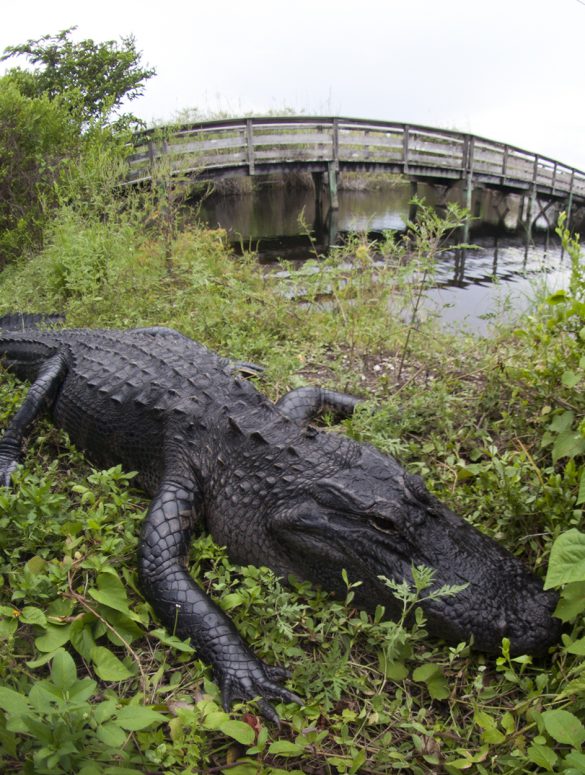South Florida is on the front lines in the war against invasive reptiles and amphibians because its warm climate makes it a place where they like to live, a new University of Florida study shows.
Using computer models and data showing where reptiles live in Florida, UF/IFAS scientists predicted where they could find non-native species in the future. They found that as temperatures climb, areas grow more vulnerable to invasions by exotic reptiles. Conversely, they found that extreme cold temperatures protect against invasion.
“Early detection and rapid response efforts are essential to prevent more of the 140 introduced species from establishing breeding populations, and this study helps us choose where to look first,” said Frank Mazzotti, a wildlife ecology and conservation professor at the University of Florida Institute of Food and Agricultural Sciences Fort Lauderdale Research and Education Center.
The new study is published online in the journal Herpetological Conservation Biology.
Lead author Ikuko Fujisaki, an assistant professor of wildlife ecology and conservation at the Fort Lauderdale REC, said scientists conducted the study to provide scientific data for managing invasive wildlife in the Sunshine State.
America imports more exotic animals than any other country in the world, with more than 1 billion animals entering the nation from 2005 through 2008, according to the U.S. Government Accountability Office. They come in by boats, planes and other modes of transportation. The animals are often used in the pet trade, but have other uses as well, including food and religious practices. Once they’re established, exotic animals are costly to remove, according to a 2010 led by Michigan State University. Therefore, wildlife management agencies are always looking for better ways to detect the invasive species early.
Urban areas are hubs of international transport and therefore are major gateways for exotic pests. With its subtropical and tropical climates and its high human population (19.9 million as of 2014), Florida provides a unique opportunity for a geographic risk assessment because of the number of exotic species that establish, fail to establish or whose fate is unknown, the UF/IFAS scientists said.
Invasive species are second only to losing habitats in contributing to the loss of biodiversity worldwide, Mazzotti wrote in a 2015 UF/IFAS Extension paper. Florida has more introduced species of reptiles and amphibians in the wild than anywhere else in the world.
This data leads Mazzotti to suggest South Florida as the focal area for exotic species.
“We need to focus immediate management efforts on South Florida, or invasive wildlife could jeopardize Everglades restoration,” Mazzotti said.
Credits:
By: Brad Buck, bradbuck@ufl.edu
Sources: Frank Mazzotti, fjma@ufl.edu
Ikuko Fujisaki, ikuko@ufl.edu

